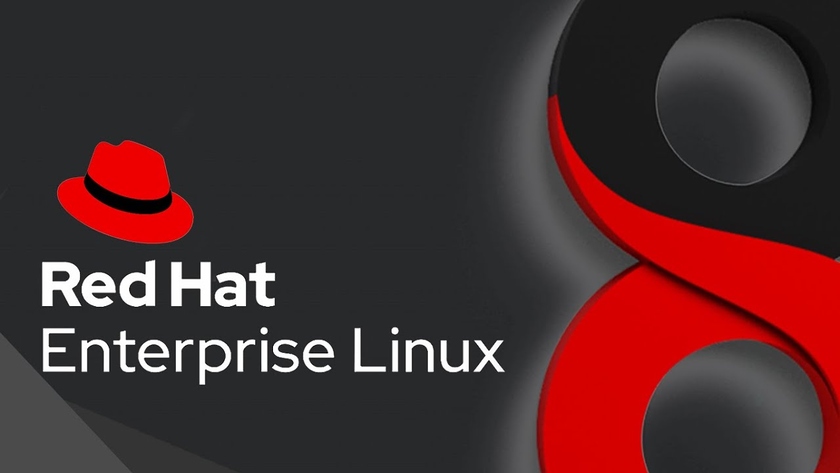Why choose Red Hat for Linux?
Every technology in your IT stack needs to work together. And the workloads need to be portable and scalable across bare metal servers, virtual machines, containers, and private and public clouds. They need a modern, security-oriented operating system (OS). That OS is Red Hat® Enterprise Linux®.
With a standard OS underlying your workloads, you can easily move them across environments—where it makes sense for your business. Red Hat Enterprise Linux gives you a consistent, stable, and high-performance platform across hybrid cloud deployments, along with built-in manageability and integration with the broader Red Hat management and automation portfolio.
Red Hat is a trusted partner to more than 90% of the companies in the Fortune 500, and a Red Hat Enterprise Linux subscription provides you direct access to, and advocacy within, the open source community. It also integrates with an ecosystem of thousands of certified cloud, software, and hardware providers. Red Hat Enterprise Linux is your foundation for innovation, offering the latest stable development tools, container technologies, hardware, and cloud advancements.
Certified in the cloud
Every cloud environment is unique. That means you need a flexible—but stable—OS. Red Hat Enterprise Linux offers the flexibility of open source code and the innovation of open source communities, along with certifications from hundreds of public cloud and service providers. We even designed a container platform, Red Hat OpenShift, so you can build, deploy, and scale cloud-native applications in public clouds—allowing you to confidently implement the cloud strategy that works for you.
With an eye to giving customers even more flexibility to use the infrastructure they have along with any new or future components, Red Hat works with AWS, Microsoft Azure, Oracle Cloud Infrastructure (OCI) and others, giving users the option to standardize their cloud operations with Red Hat Enterprise Linux in a configuration that best works for them.
Security and compliance
A more secure datacenter begins with the OS. Red Hat Enterprise Linux has built-in security features such as Security-Enhanced Linux (SELinux) and mandatory access controls (MAC) to help you combat intrusions and meet regulatory compliance. Red Hat Enterprise Linux is also Common Criteria and FIPS 140-2 certified, as well as being the first Linux container framework support to be Common Criteria-certified (v7.1).
Using a supported, enterprise open source OS, like Red Hat Enterprise Linux, means that thousands of developers are monitoring millions of lines of code in the Linux kernel—finding flaws and developing fixes before vulnerabilities become problems. And with Linux kernel live patching, security patches can be applied without downtime. Red Hat has dedicated teams of experts verifying those bug fixes and deploying patches without interrupting your applications, like those that helped handle Meltdown and Spectre a few years ago.
Icon-Red_Hat-Media_and_documents-Quotemark_Open-B-Red-RGB
As an industry recognized platform, and the fact that Red Hat goes to great lengths to get their stuff security accredited, it makes it a lot easier for me to get applications put into production since I can point my customer security people at the work that Red Hat has done upstream.
Thomas H Jones II
Senior Cloud Engineer at a consultancy with 51-200 employees
Support for emerging open source technologies
Red Hat Enterprise Linux provides more than an OS—it also connects you to Red Hat’s extensive hardware, software, and cloud partner ecosystem, and comes with 24×7 support.
Each version of Red Hat Enterprise Linux is designed for any enterprise and sets the stage for what you can do tomorrow. From containers to automation and even artificial intelligence, Red Hat Enterprise Linux is created for innovators, made for developers, and engineered for operations.
Our latest Linux release—Red Hat Enterprise Linux 9—helps achieve long-term IT success by using a common, flexible foundation to support innovation and accelerate time to market.
Streamlined migration process
Our collaboration with other major cloud providers means Red Hat Enterprise Linux is a great platform for services like Microsoft Azure and Oracle Cloud Infrastructure (OCI), giving your enterprise the flexibility to utilize legacy systems while incorporating new technologies. The thought of the migration processes involved can seem daunting, but we work with you to make the process as easy as possible.
From your first steps installing, migrating, or upgrading Red Hat Enterprise Linux to eventually deploying across multiple clouds, we provide utilities to help.
Our migration tools make it easy to get started if you’re coming from CentOS Linux or another Linux distribution, like Ubuntu, Debian, or Fedora. For example, you can convert from CentOS Linux® or Oracle Linux distro to Red Hat Enterprise Linux 7 or Red Hat Enterprise Linux 8 with the Convert2RHEL command line utility. Convert2RHEL will automatically identify and replace OS packages from your original Linux distribution with Red Hat Enterprise Linux equivalents, but Convert2RHEL is officially supported to help troubleshoot conversion variants.
Red Hat Enterprise Linux 7 for Third Party Linux Migration is a new offering designed to assist users of CentOS Linux 7 to maintain business continuity after the EOL date. This competitively-priced offering includes a Red Hat Enterprise Linux subscription and tooling to convert in-place instances of CentOS Linux 7 to Red Hat Enterprise Linux 7.
Simplify and streamline the process of assembling customized RHEL operating system images with the latest content and security updates for a hybrid cloud environment. You can create optimized operating system images with Red Hat Enterprise Linux image builder that can handle the details of cloud deployments when you’re ready.
Red Hat Enterprise Linux: особенности и преимущества
Red Hat Enterprise Linux — это бизнес-версия операционной системы на базе Linux. Она отлично работает на компьютерах, серверах, а также в гипервизорах или облаке. В статье расскажем о Red Hat в целом, а также об особенностях и преимуществах RHEL.

О компании
Сегодня Red Hat — крупнейшая и наиболее признанная компания, в которой работает более 500 сотрудников по всему миру. Она была основана в 1994 году Бобом Янгом и Марком Юингом. Их философией было предоставление продуктов с открытым исходным кодом.
Главный продукт разработчика — Red Hat Linux, программный пакет, основанный на ОС Linux. Так Линукс и работающие на нем системы сложны, компания может продавать сам продукт относительно дешево, а основная плата берётся за тех поддержку, обучение, которые нужны для обслуживания системы. Red Hat также предлагает курсы для обучения профессионалов и разработчиков полноценной работе с Linux.
Бизнес-модель сильно отличается от обычных компаний. Вместо того, чтобы разрабатывать программное обеспечение, а потом продавать его за крупную сумму, компания собирает коллективную работу тысяч программистов, упаковывает и продает готовый продукт под своим именем. Так как Линукс является проектом с открытым исходным кодом, Авторы программного продукта не могут заявить на него свои права. Red Hat Linux можно скачивать бесплатно, а затем менять, копировать, распространять как угодно без нарушения какого-либо закона. Red Hat работает за счёт того, что предоставляет удобный готовый продукт с документацией и технической поддержкой.
Несмотря на коммерческое направление, компания всё ещё верна сообществу открытого исходного кода. Она внесла большой вклад в разработку ряда проектов, а также держит в штате 14 разработчиков, занимающихся разработкой и расширением ядра Линукс.
Red Hat Enterprise Linux
Дистрибутив предназначен для корпоративного использования. Основная его особенность —коммерческая поддержка на 10 лет.
Также дистрибутив имеет следующие особенности:
Скачать бесплатную тестовую версию RHEL можно на сайте. В течение 60 дней вы сможете пользоваться:
- операционной системой,
- репозиториями,
- порталом Red Hat с кейсами от разных компаний,
- квалифицированной службой поддержки,
- обучающими видео и документацией.
Преимущества продукта
Red Hat Enterprise Linux является стабильной производительной платформой, отлично подходящей для гибридных облачных развертываний. Далее перечислим её основные плюсы.
1. Сертифицировано в облаке
Так как облачные среды могут существенно различаться, нужна гибкая, но стабильная ОС. Red Hat Enterprise Linux сочетает гибкость открытого исходного кода, инновации, а также сертификаты от облачных служб и поставщиков услуг. Контейнерная платформа Red Hat OpenShift позволяет создавать, разворачивать, масштабировать облачные приложения в общедоступных облаках.
2. Безопасность и соответствие
В RHEL появился более безопасный ЦОД, который имеет встроенные функции безопасности, такие как Linux с улучшенной безопасностью (SELinux) и принудительный контроль доступа (MAC), которые помогут бороться с вторжениями и соблюдать нормативные требования. Red Hat Enterprise Linux имеет сертификацию Common Criteria и FIPS 140-2, он стал первой контейнерной инфраструктурой Линукс, которая поддерживает сертификацию по Common Criteria (v7.1).
3. Поддержка современных опенсорс технологий
Позволяет подключаться к обширной аппаратной, программной и облачной партнерской экосистеме Red Hat, от контейнеров до автоматизации и работы с нейросетями.
Последняя версия Linux — Red Hat Enterprise Linux 9 — помогает добиться долгосрочного успеха в области ИТ, используя общую гибкую основу для поддержки инноваций и ускорения выхода на рынок.
4. Оптимизированный процесс миграции
Операционная система становится отличной платформой для таких сервисов, как Microsoft Azure, Oracle Cloud Infrastructure (OCI), что даёт предприятиям гибкость для использования устаревших систем с внедрением новых технологий. Процессы миграции максимально упрощены.
5. Доступен расширенный жизненный цикл
RHEL может поддерживать критически важные приложения за счёт десятилетнего жизненного цикла, возможности выбрать развертывание главных поддерживаемых версий и тот факт, что компания обещает сохранять стабильность приложения даже при внесении незначительных изменений.
6. Гибкая портативная модель подписки
Модель подписки позволяет выбирать основу для покупки, объединять подписки для упрощения покупки, перемещать подписки из физических в виртуальные, в облачные и обратно, чтобы адаптироваться к изменяющимся требованиям.
